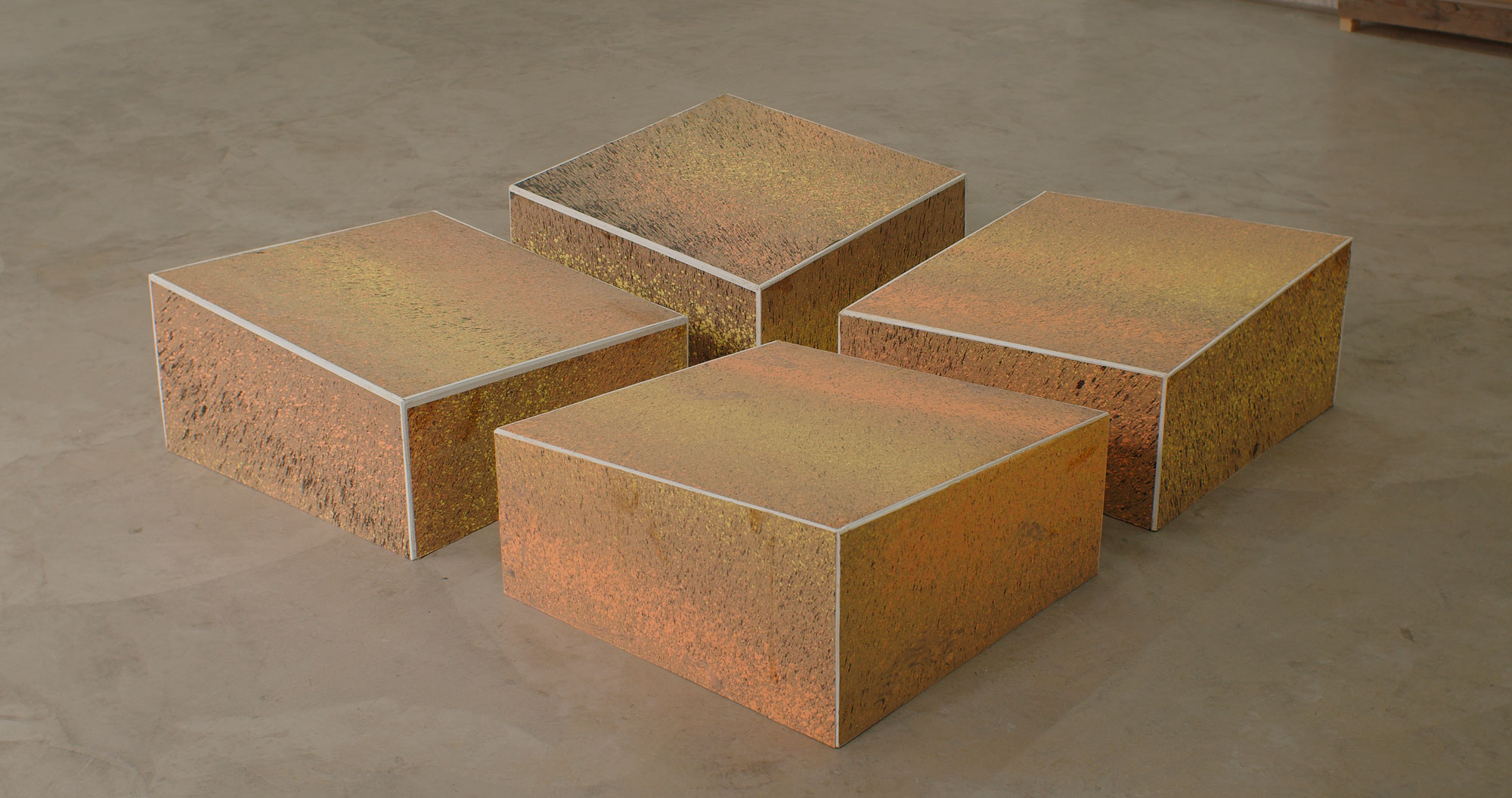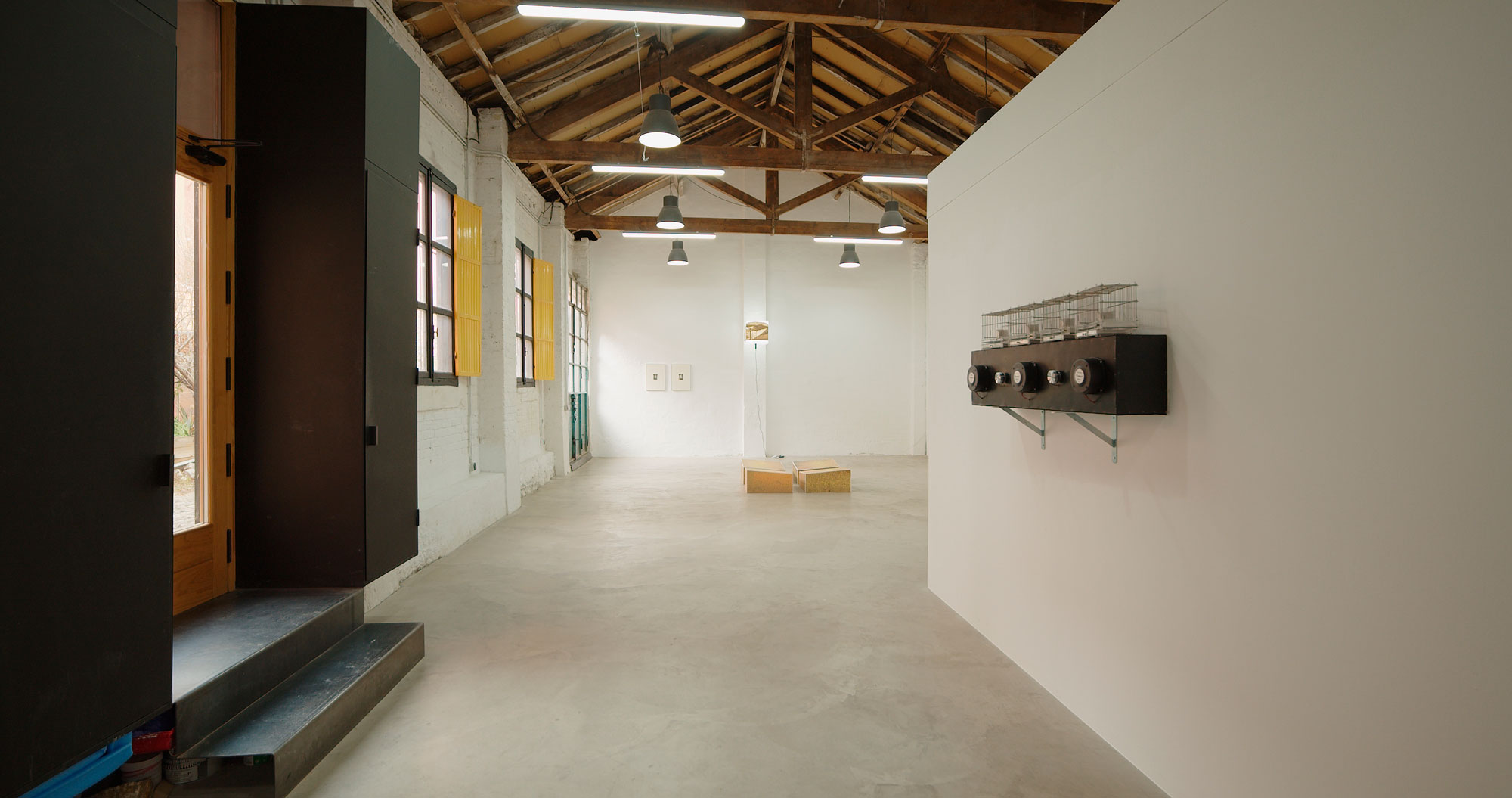Conversation with Leto Ybarra
The documentaries of Félix Rodríguez de la Fuente, minimal and postminimal art, body shakers, the lyrebird song, bodybuilding photography, and butch aesthetics all find themselves matching up in the work of artist Leto Ybarra (Madrid, 1991). Her latest show, Neoned, articulates different scenarios where masculinity, theatricality, and artifice are drawn and blurred until almost completing a single body.
Crucial for Ybarra’s work is making visible theatrical strategies that operate in the construction of hegemonic masculinity. With her multiple references and formats, the artist addresses different aspects of the fabrication and manipulation of reality and meaning. We visited The Ryder gallery, where Ybarra showed her latest work, and she told us about her artistic process.
Neoned is curated by the Yaby collective (Beatriz Ortega Botas & Alberto Vallejo). Yaby is a curatorial project based in Madrid that has worked with artists such as Aria Dean, Claudia Pagès, P. Staff, Angharad Williams, and Bruno Zhu, among others.
Art Viewer: Tell us about your background and where you come from. Since you started writing poetry before working in the visual arts, tell us briefly about your origins, when, and how that transition occurred.
Leto Ybarra: Yes, I started writing poetry long before producing artwork. Through Libros Mutantes Art Book Fair, I ended up working at La Casa Encendida, where I was in daily contact with the visual and performing arts for several years. As a result of this, most of my friends are artists. Almost by chance, I found myself in this context marked by visual practice. I ended up wondering about the visuality of the text when I came across works by artists as diverse as Hanne Darboven, the collaboration of León Ferrari and Mira Schendel, or Renee Gladman. This is what encouraged me to start doing work. If the text had a significant presence at a material level in my previous production, in Neoned, there is another transition. The textual is present in a different way.
Art Viewer: Where do your interest and influence in minimalist and post-minimalist art come from? The reference is very significant, not only in the central piece of four polygons but in the whole exhibition, in all the pieces and their arrangement in space.
Leto Ybarra: My interest comes from its usefulness in thinking about the relationship between masculinity and theatricality beyond its direct representations. Especially when relating masculinity with theatricality, a concept that drags an excess of visuality and that visuality usually presupposes bodies.
Neoned is heavily influenced by another exhibition, Spaces, which took place at MoMA in 1969. It featured many established figures of Minimalism and 20th-century art, such as Michael Asher, Dan Flavin, and Robert Morris. In fact, the central piece in the gallery of four polygons is a scaling down of Morris’s work for Spaces. In his piece, there is a deliberate manipulation of the natural environment. He manipulates the trees’ scale and arrangement to influence the viewers’ sense of space. I am not interested in Morris’s motivations behind the work; they are probably very dubious. But I am interested in reworking specific strategies and recognizable traces of these movements from different purposes and epistemological frameworks. Morris’s work made me think a lot about the idea of trickery and how tricks are used to generate the “reality effect” and the supposed default, a concern that runs throughout the exhibition.

Art Viewer: In your previous work, as well as your exhibition Neoned, you used text editing extensively. In earlier works, this was more apparent, but in this exhibition, you use it as a working process, but you don’t reveal it obviously or formally. Tell us about this change in your work.
Leto Ybarra: As I mentioned before, in my previous production, the text was very present in the works. My question at the time of working was more about how text and drawing are related when one becomes the other and vice versa, how the spatial distribution in “the paper sheet” influences the meaning and that sort of thing. These things continue to interest me a lot, but I was telling myself more and more that language can be approached in other ways. So I wanted to do work without directly including text. In the exhibition, the starting point is the nature documentaries of the popularizer and naturalist Félix Rodríguez de la Fuente. The foundation of his documentaries was the scripts, so he would manipulate the representation of reality to fit the story if necessary. This way, in his documentaries, the images were at the service of the text quite directly. So the reflection on language is still very present.
On the other hand, I used an artificial text-to-image intelligence program for the Before and After photographs. For this, I introduced my poems that dealt with these themes and included some commands and scripts for them.

Art Viewer: Your exhibition, Neoned, is full of references to both contemporary art and poetry, as well as other references from popular culture. It is a multi-layered exhibition full of meaningful connections. What is the role of the viewer in this scenario?
Leto Ybarra: Thank you, I’m glad you find several levels of depth to the exhibition. It’s a way of presenting work that I feel comfortable with. My way of researching and elaborating ideas involves gathering a lot of content and references from different fields, and I guess some of that comes through in the work. But there are many possible experiences for the viewer in the show.
Art Viewer: This is your first solo exhibition in a commercial gallery. How were the relationship and the process with the gallery?
Leto Ybarra: I enjoyed it very much. Patricia Lara and Rafa Barber have put a lot of trust in me. Only so many galleries would have jumped at a proposal like this. The studio visits and conversations with them have helped me a lot, and they are also very easygoing.
Art Viewer: And how has the relationship and the work with Yaby been?
Leto Ybarra: It has been crucial. At an early stage of the project, I already started to share ideas with them, so there has been a constant exchange practically from the beginning. We share many interests and references, so it has been quite an organic process.

Art Viewer: Tell us about your curatorial work. You have just organized the exhibition landscape hot mic at Juf space, a collective art space you are part of. Tell us about the exhibition and its relation to your work as an artist.
Leto Ybarra: Broadly speaking, the exhibition landscape hot mic reflects my sustained interest not only in poetry but in language in general, in how language circulates and in what particular conditions it feeds to generate meaning. The exhibition approaches the work of artists who deal with these issues. Concrete poetry or aesthetics with minimalist and conceptual features are present on a formal level. Language is an abstraction, so it makes sense that some artists are drawing on some of the strategies of these movements to dismantle it or question how it encodes ideological biases, institutional interests, and so on. On the other hand, researching the artists and their works for this exhibition is also part of my training and research as an artist.
*Please visit Neoned at The Ryder here and landscape hot mic at Juf here
***
Leto Ybarra (b. 1991, Madrid, Spain). Leto Ybarra is artist, poet and co-founder of the Art and Poetry project Juf in Madrid. Their work has been shown and recited at Luis Adelantado (Valencia, 2022), Gasworks (London, 2022), La Casa Encendida (Madrid, 2022), Cordova (Barcelona, 2021), CentroCentro (Madrid, 2020), Intersticio (London, 2020), Haus Wien (Vienna, 2020), among others. They have been artist-in-residence at Gasworks (2022), Tabakalera (2022) y Matadero Madrid (2023). In 2021, they published Fantasmita eres pegamento with Caniche Editorial.
